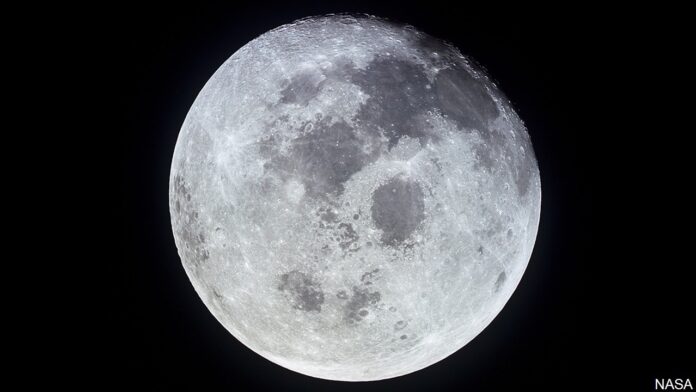Spring is a time of special observances for both Christians and Jews and the phases of the moon are the determinates of when the observances are held.
The phases of the Moon determine when the Jewish world commemorates the Feast of the Passover, March 27 this year, and the Christian world commemorates Easter on April 4. Many of our cultural celebrations are ancient and most of them are based on lunar or solar cycles. Have you ever wondered why Easter (and Passover) fall at different dates each year? It has to do with the phases of the Moon.
The date that marks Easter Sunday and the celebration of the ancient Jewish Passover occurs on the first Full Moon after the spring or vernal equinox. Since the spring equinox will occur on March 20, this means after the Full Moon occurs on March 28 this year,then Easter will be observed on April 4.
The Jewish Passover marks the miraculous release of the Hebrews from slavery in Egypt. Yes, the ones who built those massive pyramids tourists still flock to see today. The story is wonderfully told in the Old Testament book of Exodus. The Easter story celebrates the death, burial, and resurrection of the Jesus in the New Testament books of Matthew, Mark, Luke, and John.
At the whims of springtime weather conditions, we are offered visions of splendor in our skies. Cloudy weather is welcomed when it brings rain for our crops and natural vegetation, but brings groans from star-gazers. What you see is what you get and if we are able to see stars from our viewing location, there are some traditional spring constellations to enjoy.
The curve of stars that mark the head of Leo the Lion are following closely behind Orion the Hunter. Resembling a scythe or the Soviet sickle, there are several fairly bright stars that form the curve and a brighter star just below the lower curve that marks the end of the handle.
That star is called Regulus by current stargazers, but ancient Arab astronomers called itQalb al-Asad, which means Heart of the Lion. It’s also sometimes called Cor Leonis, also meaning the Lion’s Heart. This same name was said to have been given to the English king, Richard the Lion-Hearted. Although it appears to be a single bright star, it is composed of four stars.
If your viewing site is dark enough you might be able to see the inverted Y shape of Cancer. This faint constellation known as the Crab, is home to the Messier Object 44, or the Beehive. Galileo Galilei named this cluster the beehive because it resembles a cluster of bees.
When he saw it through his primitive astronomical telescope in 1610, he counted 40 stars. Today we count almost 200 stars in the open galactic cluster located a mere 525 light years away. The Beehive is very near the ecliptic and perfect to view through binoculars. You might even be able to see a planet in the region.
Ancient astronomers called this group the Præspepe which means manger.Two of the stars in Cancer are called the Northern Donkey and the Southern Donkey. Are they munching hay from the manger?
If you are interested in information about the local astronomical society, please check out their website on Facebook, https://www.facebook.com/STARSocietyRGV/This group of young sky watchers are building a program of podcasts and are connected with the UTRGV Christina Torres Memorial Observatoryand bringing outreach programs and star parties to the Resaca de le Palma state park, the Children’s Museum of Brownsville, and other entities.
Until next week, KLU.





